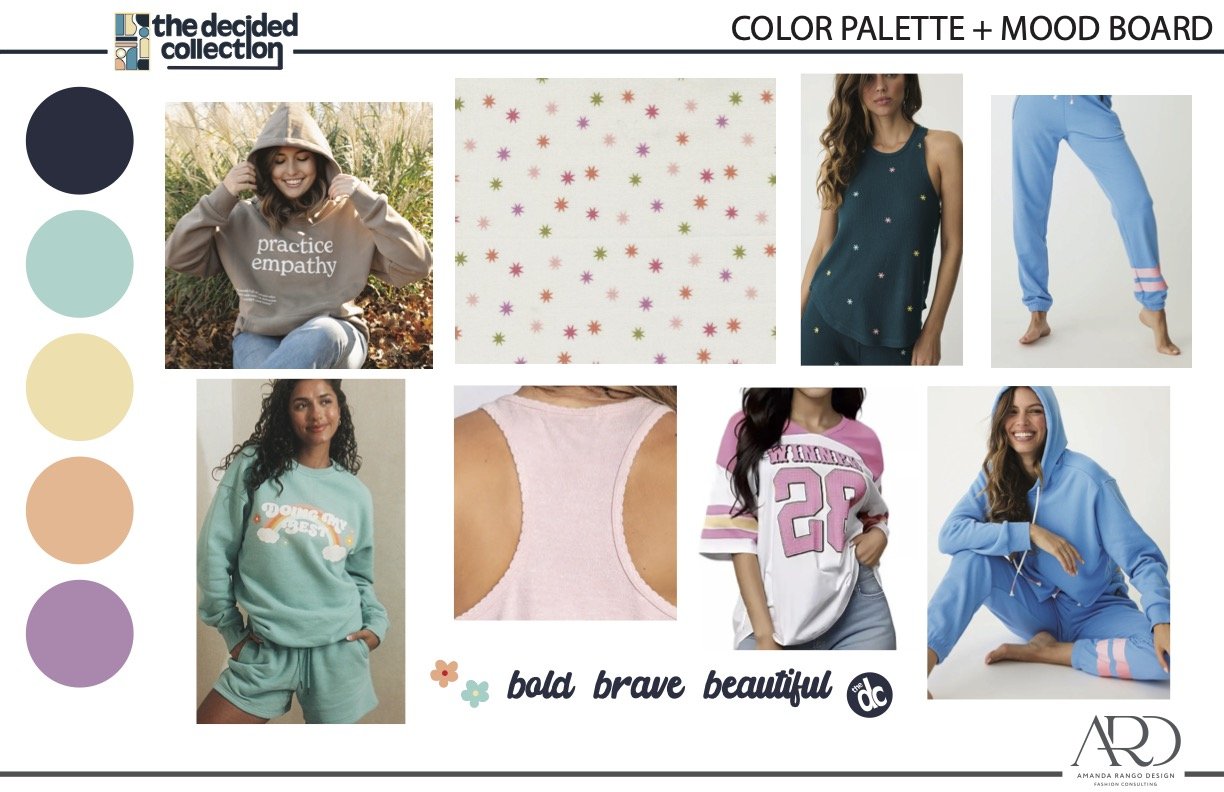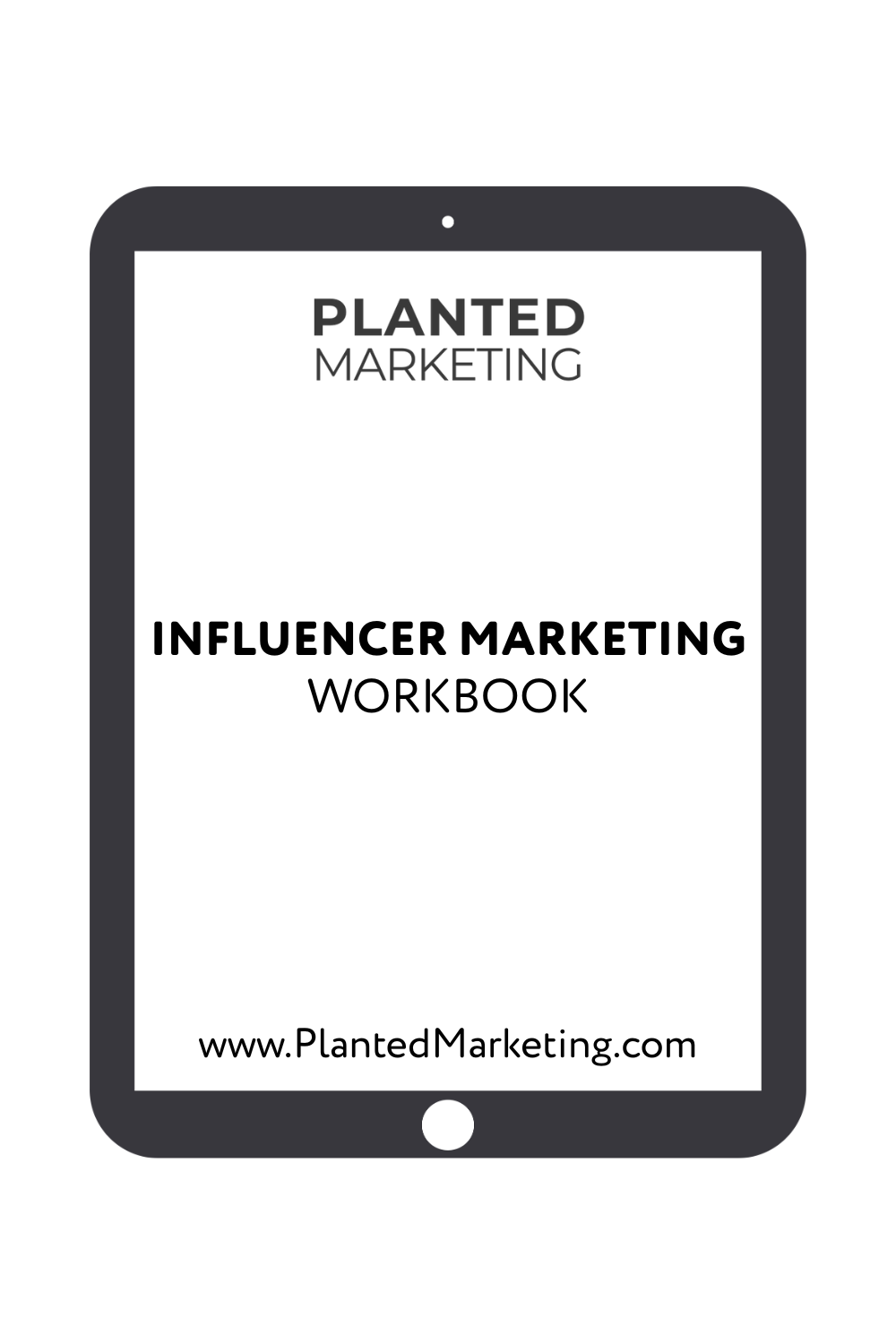Marketing Your Fashion Brand During the ARD Process: A Step-by-Step Guide
Launching a fashion brand is an exhilarating journey. From the spark of your first design idea to seeing your creations on shelves or online, it’s a process filled with creativity, problem-solving, and ambition. But there’s one big thing that gets lost in excitement that leads to major disappointment…
That is the moment you’re ready to launch. You create your announcement, hit post, and hear crickets from your 50 followers. During the excitement of developing your brand, you forgot to get the word out that it was happening!
You may be wondering, “What am I supposed to be talking about when I don’t have anything created yet?” You don’t need products to market your brand. You can start immediately and that’s exactly what we’re going to chat about today.
When to build your website, when to start posting, and how to build HYPE so when you’re ready to make that ‘We’re Live!’ announcement, you have orders already placed. This is why integrating marketing into every stage of the ARD process is critical and I’m going to tell you all about it.
So, hi! I’m Berlyn, founder of Planted Marketing and The Greenhouse. I work with early-stage entrepreneurs to create clear, actionable marketing strategies that drive results. In this guide, I’ll walk you through the 12-month ARD process, highlighting when and how to start marketing, build a community, and lay the groundwork for a successful launch.
Okay, let's do thisssss!
Stage One: Laying the Foundation for Your Fashion Brand
The first stage of the ARD process is all about laying the groundwork. This is when you define your brand identity, understand your audience, and research the existing market. Before you invest heavily in design or production, you need clarity about who your customers are and how your brand will reach them.
This is exactly where we start in the marketing process as well. You never want to dive in without a game plan. Marketing during this stage starts with research. Understanding your competitors - their strengths, weaknesses, and how they engage their audience - provides valuable insights. Look beyond the surface: read buyer reviews, analyze social media campaigns, and pay attention to how their customers respond. This research will help you differentiate your brand and avoid pitfalls that others have faced.
Equally critical is identifying your target customer. Think about the people who would be most excited to buy your designs. What other brands do they shop with? What values or aesthetics resonate with them? Knowing your ideal buyer informs not only marketing but also product development, ensuring your designs meet the expectations of the people who will support your brand.
On the marketing foundation side, this is when securing your brand name plus domain and social media handles is important. Securing names can be pretty challenging these days. Make sure to do your research on what’s available and if it can be trademarked. You don’t want to go through full development, get in a branding war, and then deal with the consequences. Even if your website is a simple “coming soon” page with a waitlist signup, it establishes your online presence and begins building your audience. Collecting emails at this stage allows you to nurture early interest, creating a pool of potential customers ready for your launch.
Community building also begins here. Engaging in community spaces allows you to connect with other designers, ask questions, and gain insights. Early networking sets the stage for partnerships, collaborations, and peer support, all of which are invaluable as your brand grows.
Your checklist:
Understand your competitor landscape
Create your target audience and personas
Define your branding (voice, messaging, values, etc)
Secure your brand name, domain, and social handles
Find community support spaces
Content Ideas:
Establishing a personal brand - share your WHY
Share design inspirations
BTS looks at mood boards and sketches
Stage Two: Building Your Product Roadmap
Once your foundation is established, it’s time to move into building your product roadmap. This stage is where ideas transform into tangible assets, including technical sketches, fabric sourcing, and branding details. While the design process is central here, marketing remains an essential companion.
Sharing your design concepts and inspiration stories with your audience creates engagement and excitement. When followers see your vision unfold, they feel included in the journey, making them more likely to support your brand at launch. Consider inviting feedback or even allowing your community to vote on designs or patterns. This participatory approach fosters loyalty and encourages early advocacy.
Discussing material sourcing and vendor choices is another opportunity to add depth to your marketing. People love to understand the story behind a product, like the craftsmanship, the sustainability choices, and the thought process that goes into each design. Sharing this content through social posts or blogs not only educates your audience but also reinforces your brand values.
Content in this stage can range from sneak peeks of sketches to videos explaining design choices. Blog posts or social updates that tell your brand story create an authentic narrative that engages followers and draws them closer to your brand. Polls, Q&A sessions, or live streams can further deepen community engagement, making your audience feel invested in your brand’s evolution.
By the end of this stage, your early followers should feel like insiders. They’ve seen your vision take shape, participated in decisions, and are eager to see what comes next. Marketing has now become an integral part of your product journey, rather than an afterthought.
Your checklist:
Start building your email audience
Content Ideas:
Share design sneak peaks
Use polls to start engagement by having people vote on designs/patterns
Talk about material sourcing and why you chose specific vendors
Stage Three: Product Development and Refinement
Stage three is where your ideas begin to take physical form. Samples are made, prototypes are tested, and pricing, sourcing, and execution are refined. This stage is as much about strategy as it is about creativity, and marketing during this phase is focused on building anticipation.
Early teasers are critical. Begin subtly promoting your upcoming launch through behind-the-scenes content, highlighting sample creation, fittings, or production moments. Collaborating with micro-influencers at this stage can provide valuable feedback and help create organic buzz. Additionally, collecting testimonials or beta reviews offers social proof that strengthens your brand credibility.
Stories that highlight problem-solving, fabric selection, or sustainability practices enrich your content, giving your audience insight into your process and reinforcing your brand values. Educational posts about craftsmanship or material choices not only inform your audience but also position your brand as knowledgeable and trustworthy.
During this stage, encourage sharing by offering early followers exclusive content or perks. Soft promotion of your waitlist helps maintain engagement and ensures that when your launch arrives, your audience is ready to act. This approach blends anticipation-building with relationship nurturing, ensuring that your marketing aligns seamlessly with product development.
Your checklist:
Identify and collaborate with influencers (free workbook and tracking system here)
Start increasing activity on your social channels to build engagement before launch
Content Ideas:
BTS content
Review of samples - share what you like and don’t like
Share creator content with influencer collabs
Share reviews from creators
Talk about the product details
Influencer Marketing Workbook + Tracking System
This interactive workbook is designed to walk you through every step of the influencer marketing journey, helping you craft a strategy that aligns with your brand’s goals, values, and vision.
Stage Four: Production and Supply Chain Essentials
With production underway, your focus shifts to visuals, marketing materials, and e-commerce readiness. Stage four is all about preparing your brand for a successful public debut.
Professional photography and product visuals are crucial. High-quality images not only enhance your website and social media but also attract retailers and press attention. Sharing behind-the-scenes moments from photoshoots or production adds a personal touch and further strengthens the connection with your audience. Highlighting the people behind your brand, whether makers, vendors, or collaborators, humanizes your story and creates authenticity.
Marketing materials for retailers, media, and press outreach are essential at this stage. These assets ensure your brand is presented consistently and professionally across all channels. Building your e-commerce website with compelling product pages allows you to capitalize on the anticipation you’ve created and convert interest into sales.
Community engagement should also ramp up during production. Social media giveaways, early access promotions, and influencer gifting programs increase pre-launch excitement. Pinterest and Instagram, as highly visual platforms, become particularly important for showcasing your products and driving traffic to your website. At this stage, every marketing effort should build anticipation, reinforce your brand identity, and create tangible pathways for audience action.
Your checklist:
Begin photoshoots
Create marketing materials for wholesale partners
Create your launch strategy
Determine your press strategy
Start posting to Pinterest
Content Ideas:
BTS of photoshoots
Share information about launching
Create a launch countdown
Share vendor information if doing wholesale
ARD Fashion Consulting on set of a photoshoot for The Decided Collection
Stage Five: Sales and Marketing Readiness
The final stage of the ARD process is all about launch readiness. While ARD focuses on product development, this stage ensures your marketing efforts are in place to support a strong debut.
Launching a collection without a clear plan is a common pitfall. At this point, your strategy should include email campaigns, social media promotion, PR outreach, and influencer partnerships. Having a clear budget and ongoing marketing plan allows you to sustain engagement beyond the initial launch period.
Content should highlight product reveals, lifestyle imagery, and user-generated content. Blog posts that demonstrate styling options or showcase how to wear your collection add depth and inspire customers to engage with your brand. Community engagement remains crucial. Consistent interaction through comments, DMs, and live sessions ensures your audience feels connected and valued.
Monitoring analytics and tracking campaign performance allows you to measure success and make informed adjustments. Marketing at this stage isn’t just about the launch, you want to create sustainable momentum, cultivate relationships, and set expectations for long-term growth!
Your checklist:
Finalize and begin launch strategy!
Content Ideas:
Press highlights
Reviews and testimonials
Creator content
BTS of your virtual store or in-person retail options
Packing up orders
Marketing Across All Stages: Key Considerations
Marketing isn’t a single task, it’s a continuous, evolving strategy that should be woven into your brand journey from the very beginning. Building a community, crafting a launch strategy, setting budgets, and maintaining consistency are essential elements. Social media, influencer collaborations, and platforms like Pinterest provide opportunities to reach and engage your audience visually and authentically.
By integrating marketing into each ARD stage, you avoid the trap of launching a beautiful collection with no one ready to buy. Instead, you create a loyal, invested community that is excited about your products and eager to share them with others. Marketing becomes an extension of your design process, enhancing your brand’s visibility and credibility while nurturing long-term relationships.
With the ARD process as your foundation and a clear marketing plan in place, you can confidently navigate the journey from design to launch, knowing that your audience is ready, excited, and waiting to support your brand!
If any of this feels overwhelming, know that you are never alone on this journey! My Instagram dm’s are always open for questions, and I also have opportunities for support like free resources, community support, 1:1 sessions, or full-service marketing. I’m here to be your partner on this exciting journey!








